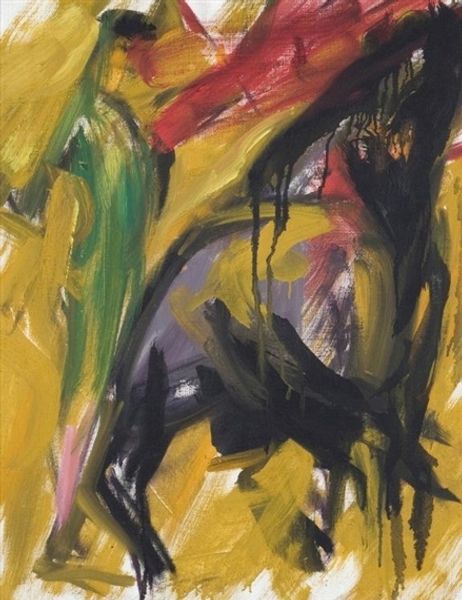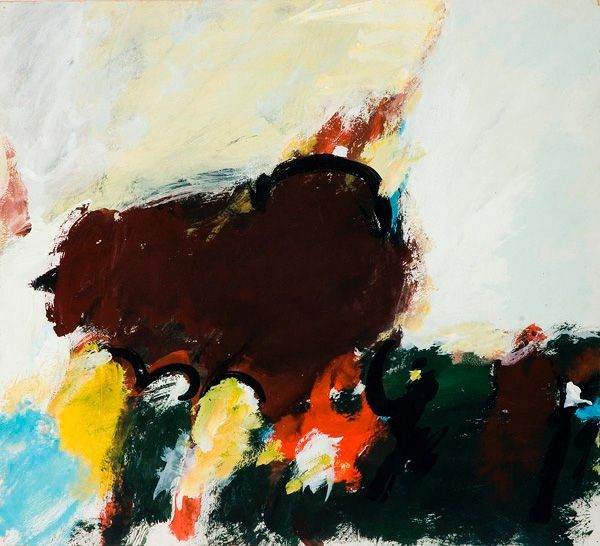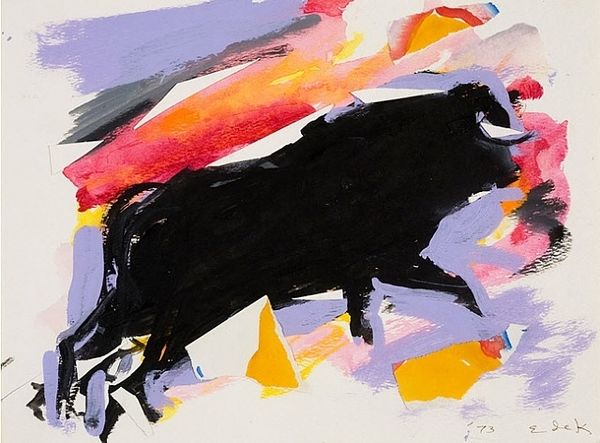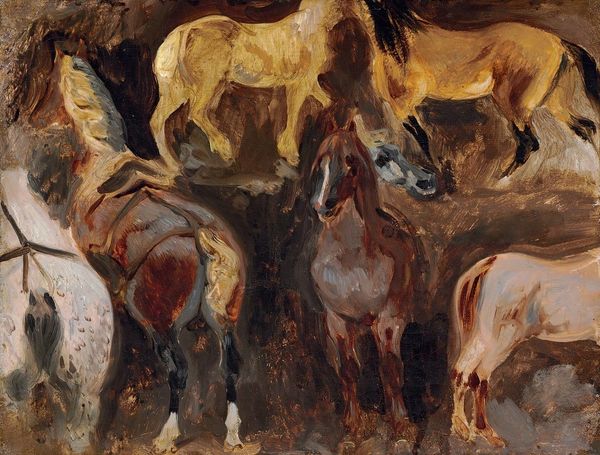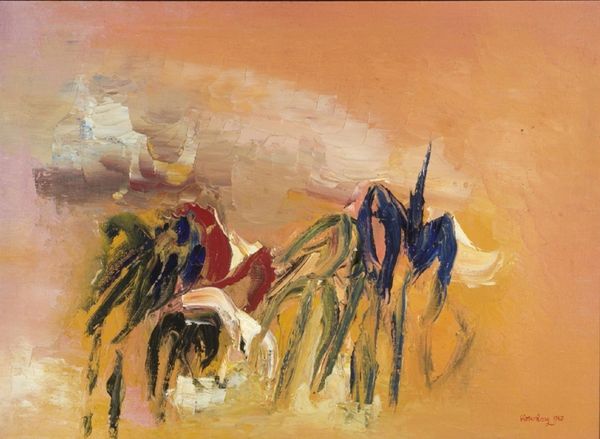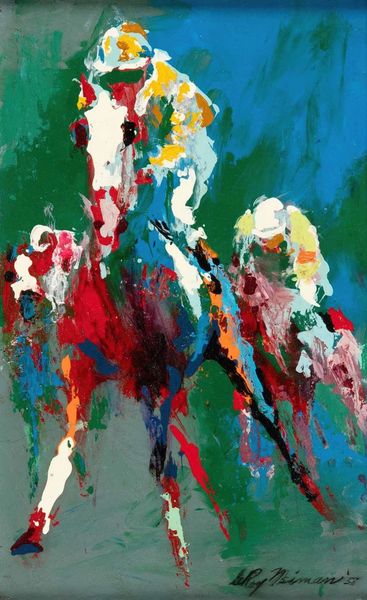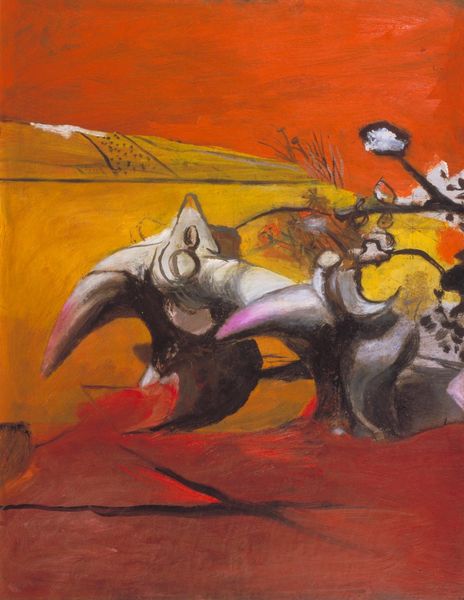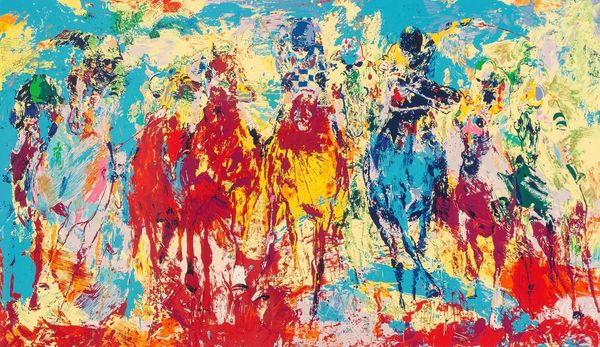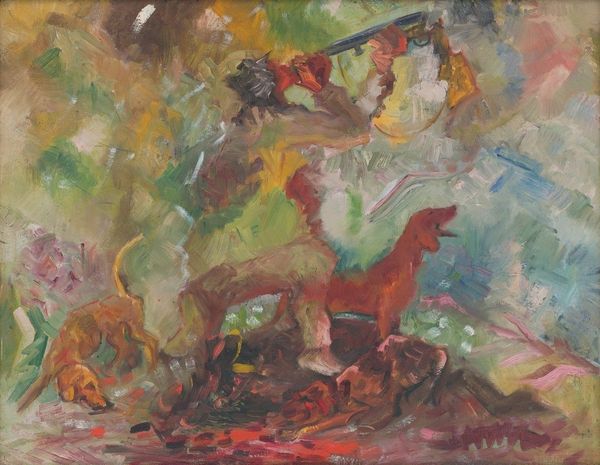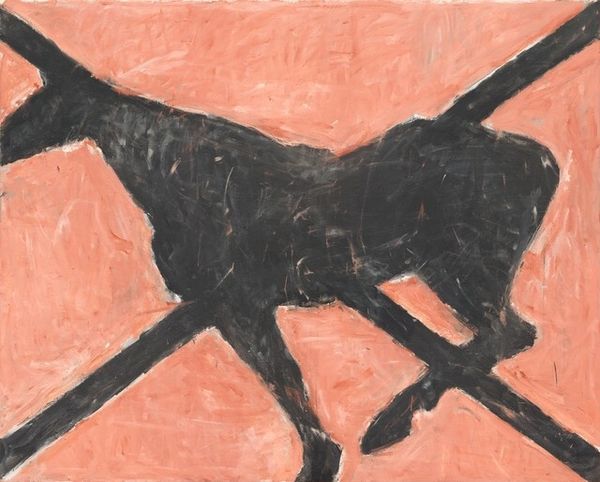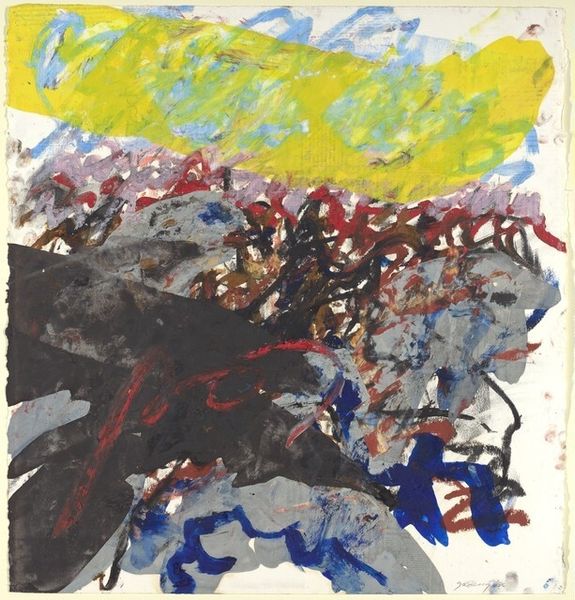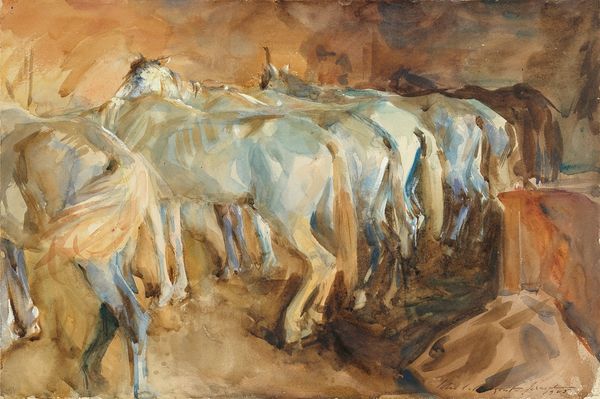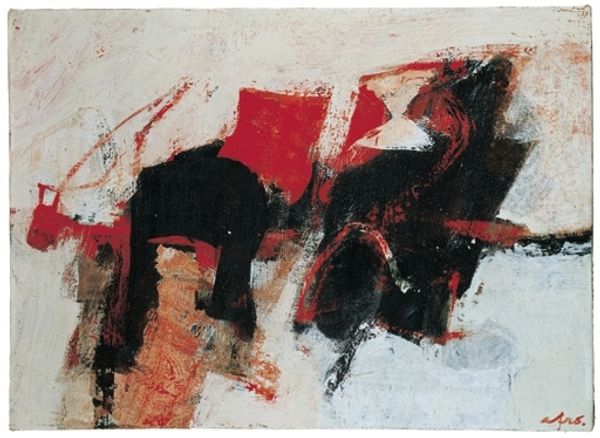
Copyright: Elaine de Kooning,Fair Use
Editor: So, this is Elaine de Kooning's "Sunday Afternoon" from 1957, oil on canvas. It’s… chaotic, almost violent, the dark mass of the bull seemingly struggling against a fiery background. What strikes you about the making of this piece? Curator: What I see here is a physical record of labor, right down to the gestural brushstrokes, they indicate a very physical engagement with the material. De Kooning wasn't just depicting a bull, she was wrestling with the oil paint itself, wasn’t she? Editor: Definitely! You can almost feel the force she used to apply the paint. But what does that aggressive application say about the culture or the consumption around art-making in the 50's? Curator: Well, think about Abstract Expressionism, large canvases, bold gestures. It’s born out of post-war industrial boom – access to materials, changing ideas around artistic production that echo changes in manufacturing. De Kooning uses commercial paint but on this huge scale and expressive way, she elevates everyday material. Consider also, the labor itself becoming visible, performative. Does it remind you of something? Editor: Yes, like Pollock’s drip paintings – but with a very specific subject emerging out of that chaos, even. Do you think her choice to paint a bull changes how we understand her labor? Curator: Precisely. The bull itself is a charged symbol, virility, brute strength. By painting it in such a physically demanding way, is she not mirroring the perceived masculinity of both the subject and of the Abstract Expressionist movement itself? How is she either engaging or disrupting that norm, by also pointing us to the labor inherent? Editor: I hadn't considered that! So the materiality and her working process become crucial tools to consider both the art and the social context. I appreciate your point that it emphasizes not only the final image but all the inputs too. Curator: And by making those things visible, she is almost pushing us to value it and engage. We often do separate work, material, subject. By emphasizing all, de Kooning might be after an emotional connection with us as viewers.
Comments
No comments
Be the first to comment and join the conversation on the ultimate creative platform.
